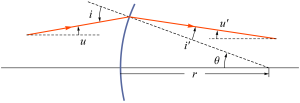A beam expander is a lens assembly that can change the diameter and divergence angle of a laser beam. The laser beam emitted from the laser has a certain divergence angle. For laser processing, only by adjusting the laser beam into a collimated (parallel) beam through a beam expander can small high power density light spots be obtained using a focusing lens; In laser ranging, it is necessary to greatly improve the collimation of the laser beam through a beam expander in order to achieve an ideal long-distance measurement effect; The beam diameter can be changed through a beam expander for use in different optical instruments and equipment; Using a beam expander with a spatial filter can change the asymmetric beam distribution into a symmetric distribution and make the light energy distribution more uniform.

Generally, we take the divergence parameter of the beam as the characteristic of a perfect Gaussian laser beam. Divergence refers to the expansion of light waves at a certain angle during their spatial propagation. Even perfectly normal light can experience some beam divergence due to diffraction effects. Diffraction refers to the bending effect of light when it is cut off by an opaque object, such as a knife blade. Spreading occurs when a secondary wavefront array is emitted at the cut edge. These secondary and primary waves will interfere with each other, and at the same time, they will also interfere with each other, forming complex diffraction patterns at certain times.
Diffraction makes it impossible to perfectly calibrate a beam, or to focus the beam to infinitely small points. Fortunately, the effect of diffraction can be calculated. Therefore, there is a theory that can predict the degree of collimation and spot size of a lens beam for any diffraction limit.
The universal beam expander originated from the Galileo telescope and typically includes an input negative lens and an output positive lens. The input mirror transmits a virtual focus beam to the output mirror, and the two lenses are virtual confocal structures. Generally, beam expanders smaller than 20 times are manufactured using this principle because of their simplicity, small size, and low price. As far as possible, the beam expander is designed with small spherical aberration, low wavefront deformation, and achromatic aberration. Its limitation is that it cannot accommodate spatial filtering or carry out large magnification beam expansion. There are three main types of beam expanders produced and represented by Borisun Optics: CO2 laser beam expanders (10.6 mm), Nd: YAG laser beam expanders (1064 nm, 532 nm, and 355 nm), and HeNe laser beam expander collimators (633 nm). According to customer needs, other wavelength beam expanders can also be supplied.



